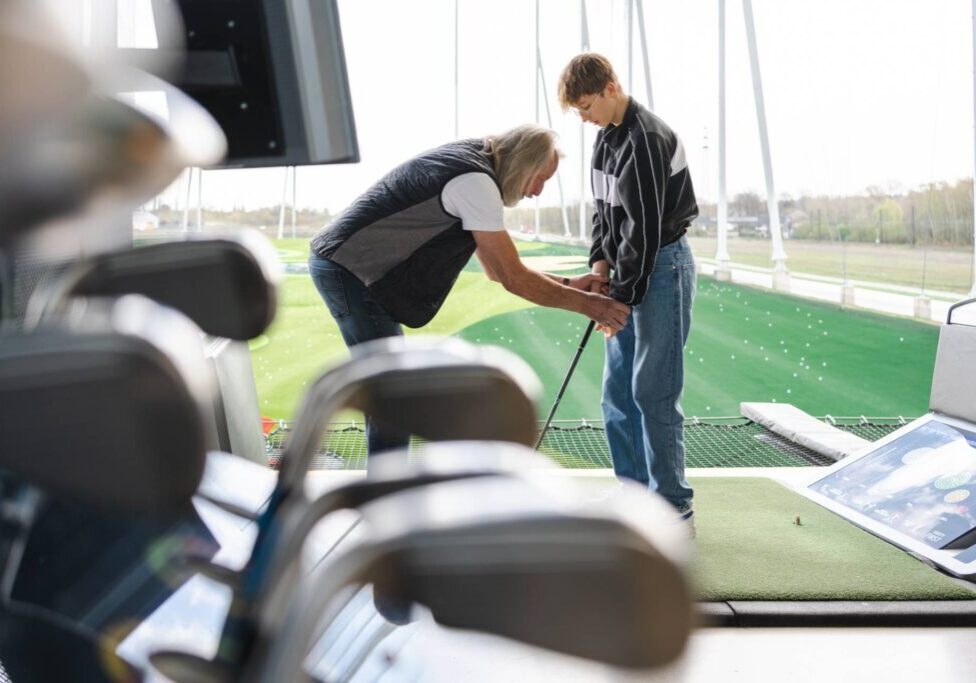
Golf is a game of precision, strategy, and consistency. Whether you’re a beginner stepping onto the green for the first time or an experienced player looking to lower your handicap, mastering the fundamentals is key to improving your game. Grip, stance, and alignment set the stage for a smooth and controlled swing. With tools like the indoor golf simulator, practicing these skills has never been more accessible. Here are essential golf fundamentals every player should know:
The Foundation of Your Swing: The Grip
The way you hold the club directly impacts your ability to control the clubface and transfer power efficiently. A proper grip ensures your hands work together as a single unit during the swing. There are three primary grip styles to consider:
- Interlocking Grip: Ideal for players with smaller hands, this grip involves interlocking the pinky finger of your trailing hand with the index finger of your lead hand. It provides a secure connection and helps maintain control.
- Overlap Grip: Popular among experienced players, this grip involves placing the pinky finger of your trailing hand over the index and middle fingers of your lead hand. It offers a balance of comfort and control.
- Ten-Finger Grip: Commonly used by beginners, this grip resembles how you would hold a baseball bat. It’s straightforward and helps simplify the learning process.
When gripping the club, ensure your pressure is firm yet relaxed. A grip that’s too tight can restrict your wrist movement, while one that’s too loose can cause a loss of control. An indoor golf simulator is a valuable tool for testing different grip styles and pressures, allowing you see how small adjustments impact shot accuracy and distance.
Building a Stable Platform: The Stance
Your stance forms the foundation for your swing. A proper stance ensures balance, stability, and the ability to generate power. Here are the key elements:
- Foot Positioning: The width of your stance should vary depending on the club you’re using. For shorter clubs like wedges, a narrower stance works best. For drivers, a wider stance helps with power generation.
- Weight Distribution: Your weight should be evenly distributed between your feet, slightly favoring the balls of your feet for an athletic posture. Avoid leaning too far forward or backward.
- Posture: Maintain a slight bend in your knees with your back straight but relaxed. Your chin should remain up to allow full shoulder rotation during the swing.
Practicing your stance in a controlled environment can help you fine-tune your positioning without outdoor distractions. Simulators allow you to test how different stances affect your swing mechanics and shot outcomes.
Precision Matters: Alignment
Alignment is often overlooked but is critical for accuracy. Proper alignment ensures your shots stay on target and helps prevent common issues like slicing or hooking. To achieve the correct alignment:
- Align your feet, hips, and shoulders parallel to your target line.
- Use alignment sticks or clubs during practice to visualize your target line.
- Stand behind the ball to confirm that your setup points directly toward the target.
Indoor golf simulators offer real-time feedback on your alignment by analyzing ball trajectory and swing path. This instant data helps identify misalignments and allows you to make immediate adjustments, improving shot precision over time.
The Role of Indoor Golf Simulators in Practicing Fundamentals
Indoor golf simulators have revolutionized how players practice and refine their skills. They provide an opportunity to work on fundamentals year-round, regardless of weather conditions. Key features of simulators include:
- Swing Analysis: Metrics such as clubface angle, swing speed, and impact point provide insights into your grip, stance, and alignment.
- Visual Feedback: High-definition graphics show ball flight and trajectory, helping you connect your setup with shot outcomes.
- Customizable Settings: Simulators can replicate on-course conditions, allowing you to practice specific scenarios and develop a versatile game.
Incorporate drills into your simulator practice sessions to target specific fundaments. For example, focus on grip adjustments during short game practice or use alignment aids to perfect your setup for drives and approach shots.
Consistency and Practice: The Key to Mastery
Mastering the basics of golf requires dedication and regular practice. Create a structured routine to focus on each fundamental:
- Spend time each session refining your grip, ensuring it feels natural and controlled.
- Practice your stance with different clubs to develop balance and stability.
- Use alignment aids to build muscle memory for accurate setups.
Combining traditional practice with the advanced analytics of an indoor golf simulator can accelerate your progress. Simulators not only make practice more engaging but also provide actionable insights that help you refine your technique efficiently.
